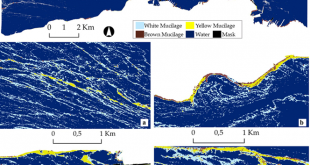International Journal of Environment and Geoinformatics, 2016
Determining Roughness Angle of Limestone Using Optical Laser Scanner
Avşar Emin Özgür, Bozkurtoğlu Erkan, Aydar Umut, Şeker Dursun Zafer, Kaya Şinasi, Gazioğlu Cem
Abstract: In this study, a limestone rock core specimen with 6.94 cm x 4.95 cm dimensions was exposed to tensile force by Brazilian test and rough surfaces were obtained. Following the Brazilian test, roughness angles were measured by a laser scanner along one side of the rock specimen. For this purpose, Nextengine 3D Desktop scanner was used. The 17 profiles were studied along the width of the core with a 0.3 mm interval. Approximately 10000 points produced for each profile, some of them are in the “+” and some are in the “-” direction along each profile. Maximum and minimum roughness angles are calculated as 65.580 and 1.56×10-5 degree respectively. The average roughness angle value of the profiles is 13.870. The percentage of the roughness angle between 13 and 14 degrees were 2.65% and 2.70% for “-” and “+” directions on the rock surface, respectively. Mathematical analyses of 17 profiles showed that roughness profiles can be expressed by 21st – 30th degree polynomial equations with approximately 10-4 degree standard deviation.

Available Online: https://dergipark.org.tr/tr/pub/ijegeo/issue/28172/306482
 UHUZAM İTÜ – Uydu Haberleşme ve Uzaktan Algılama UYG-AR Merkezi
UHUZAM İTÜ – Uydu Haberleşme ve Uzaktan Algılama UYG-AR Merkezi 